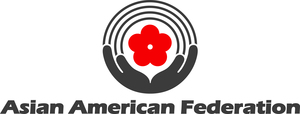Please go here if you would like to register
MEDIA ADVISORY
FOR IMMEDIATE RELEASE
November 18, 2013
CONTACT: Kimberly Goulart
Presentation of findings will discuss population growth, economic diversity, and implications for policy makers
WHAT:
Asian Americans Advancing Justice and the Asian American Federation will present key findings from the New York section of a new report that
documents the social and economic diversity of two of the fastest-growing racial groups in the region:
A Community of Contrasts: Asian Americans, Native Hawaiians, and Pacific Islanders in the Northeast, 2013 Members of the media are asked to RSVP to Dana Malone at DMalone@advancingjustice-aajc.org
WHEN:
Thursday, November 21, 2013
12:00pm – 2:00pm
WHERE:
Asia Society and Museum
725 Park Avenue
New York, NY 10021
WHY:
The AANHPI community is experiencing explosive growth in the Northeast, which is fueling a host of policy concerns including economic access and language barriers. At the same time the growth is leading to unprecedented levels of civic participation, making the AANHPI community a key electorate in metropolitan New York. A Community of Contrasts profiles this incredibly diverse population.
ABOUT:
A Community of Contrasts: Asian Americans, Native Hawaiians, and Pacific Islanders in the Northeast, 2013 compiles the latest data on growing Asian American and NHPI communities in New York, Boston, and Philadelphia. This is the fifth in a series of reports that strive to make disaggregated data more accessible in order to promote better understanding of our communities, and to help policy makers, government agencies, service providers, and other stakeholders better respond to and serve the needs of Asian American and NHPI communities.
The following sponsors made the report and launch event possible: the
Asia Society and Museum, the Wallace H. Coulter Foundation, the Chung Ying Tang Foundation, and Bank of America.
# # #
Asian Americans Advancing Justice (www.advancingjustice.org) works to promote a fair and equitable society for all by working for civil and human rights and empowering Asian Americans, Pacific Islanders, and other underserved communities. We comprise Asian Americans Advancing Justice | AAJC (www.advancingjustice-aajc.org), Asian Americans Advancing Justice | Asian Law Caucus (www.advancingjustice-alc.org), Asian Americans Advancing Justice | Chicago (www.advancingjustice-chicago.org), Asian Americans Advancing Justice | Los Angeles (www.advancingjustice-la.org).


